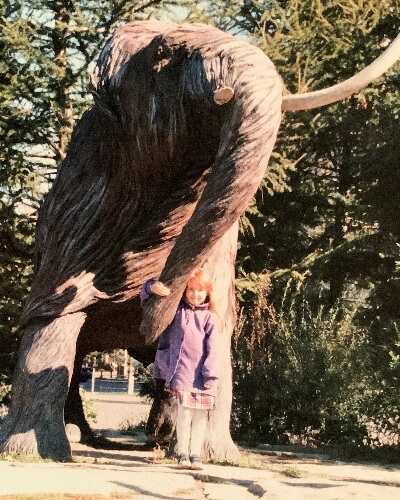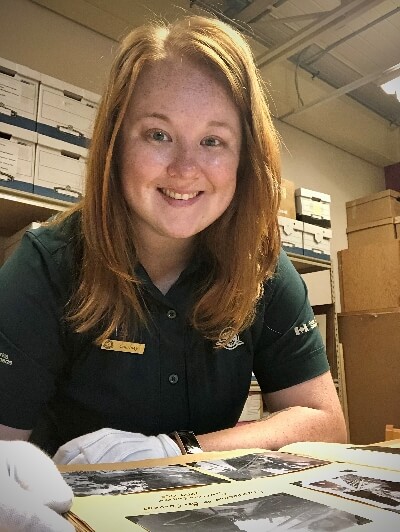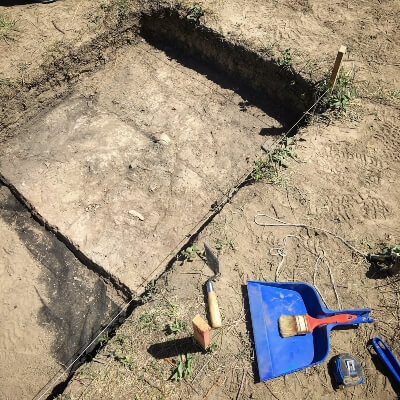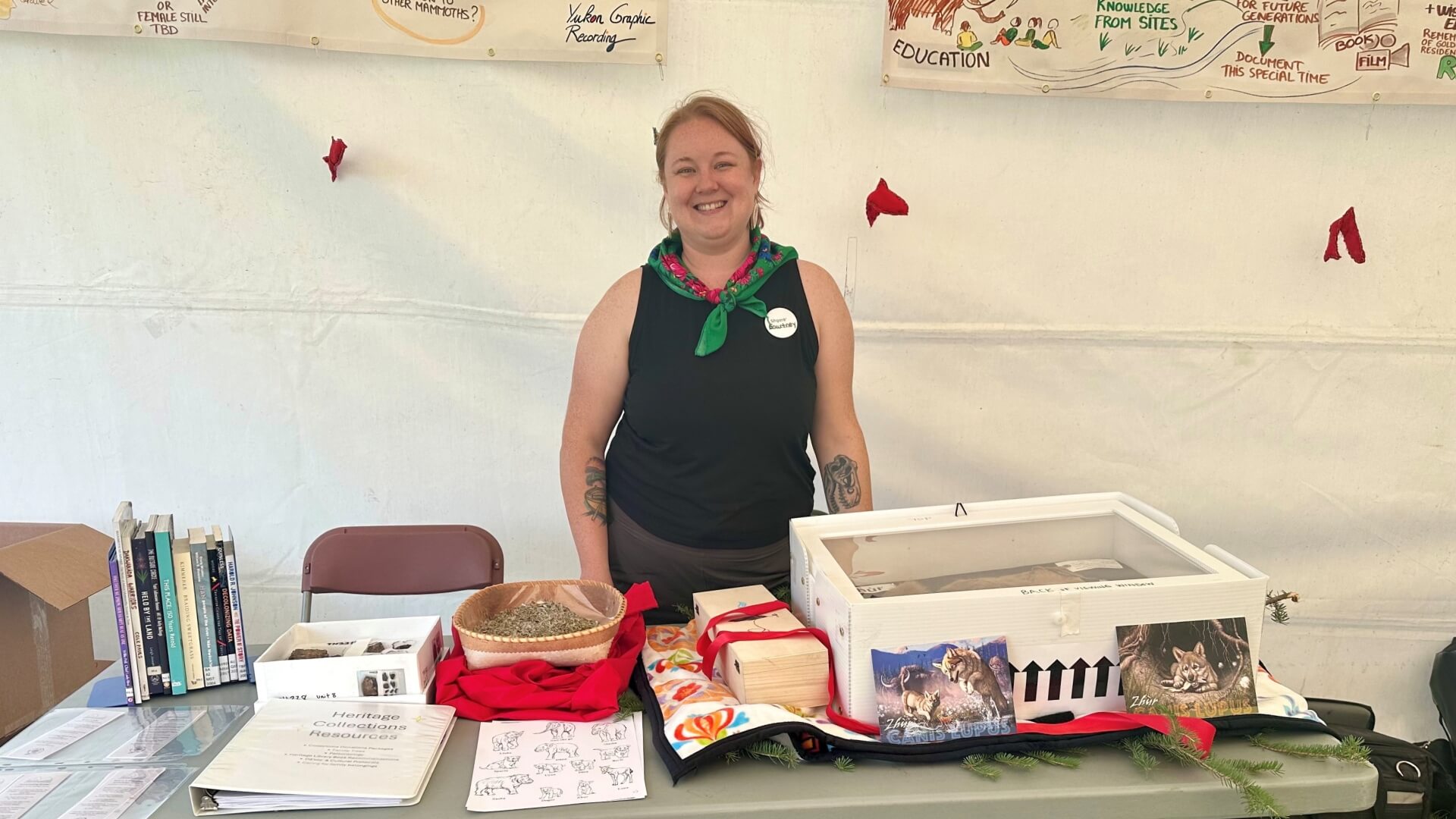Courtney King turned a childhood love of the past into a career preserving cultural belongings and stories across Northern Canada

in Ottawa, ON
When Courtney King visited the Museum of Nature in Ottawa for the first time as a child, she didn’t know she was taking the first steps toward a future career.
Now, as a graduate of Athabasca University’s University Certificate in Heritage Resources Management program, she’s working in the Yukon helping to preserve the cultural and historical record of communities across the North—and loving every minute of it.
But working in heritage was not part the original plan for King, who once contemplated a career in musical theatre.
“I took a summer job, somewhat reluctantly, as a costumed heritage guide, a museum interpreter,” King said. “And to my surprise, within the first two weeks I absolutely fell in love. I was like, ‘Holy cow, I didn’t know this sector existed!’”
King was propelled to not only continue down the path toward a career in heritage resource management, but to also pursue a degree. On June 6, King joins AU’s class of 2025 after completing the three-year Bachelor of Arts program.
Learning on the job—and online
That experience opened her eyes to career possibilities that fit with her interests, strengths, and personality. She headed west to Banff National Park and took a job as an interpreter with Parks Canada.

Soon after, King began exploring the technical and scientific components of cultural resource management—an area that includes everything from archaeology to collections care. Inspired by the possibilities of where this new area of the heritage sector could take her, she boldly asked a colleague in the organization for some advice.
“I reached out and said, ‘Can I take you for coffee? I want your job when you retire,’” King said. That conversation pointed her to Athabasca University as one of a few institutions in Canada with a specialized program in cultural and heritage resources.
She had applied and was accepted to multiple universities but chose AU because of the flexibility it offered. “AU provided the formal education I needed in an accessible way—virtually.”
She and her partner were able to keep enjoying the life they were building together in Banff, and King began her studies in the fall of 2019 while continuing to work full time, amplifying her on-the-job experience.
Then when the COVID-19 pandemic disrupted her work, she turned her focus to the specialized training she needed.
AU’s program was completely online and already set up for success during the pandemic, which allowed me to keep learning and growing even in uncertain times.
Finding her own path
Coursework in the University Certificate in Heritage Resources Management program includes everything from conservation science and collections management to heritage policy and exhibit design.

This breadth of knowledge has served King well—she sees herself as a generalist, and credits understanding all these different practices for her success within the sector.
“The conservation course was particularly eye-opening,” she said. “You learn how materials interact, how to prevent deterioration. It’s like applied chemistry for heritage.”
For example, King explained why you wouldn’t keep a lead or tin artifact in an oak cabinet. That’s because oak trees are acidic and a chemical reaction would occur—white, porous crystals would eventually grow on the metal as acetic acid, more commonly known as vinegar, leaks out.
Another highlight of the program was a unique hybrid practicum where King supported cultural heritage work in Africa. Some students travelled to Lethoso, a small country encircled by South Africa, while others, like King, participated virtually.
Related: Travel the world and experience different cultures while earning AU credit
Heading north—Far North
After earning her certificate in 2021 and finding herself up against other job applicants who had either more experience or advanced degrees or both, King looked farther from home for her next opportunity.
That’s how she ended up in Dawson City, Yukon, working with Parks Canada at the Klondike National Historic Sites. With limited housing options, the move had King and her partner temporarily renting an off-grid cabin accessible only by ferry.
“Not for the faint of heart,” she said with a chuckle. “But it was an incredible experience.”
There, she worked with historical artifacts from the gold rush. “It’s an amazing collection,” King said. “Parks Canada’s entire heritage resources collection has more than 31 million objects, but there are over 250,000 just in the Klondike collection alone.”
That six-month contract led to another opportunity in Canada’s North—managing a collection of 30,000 cultural belongings for the Tr’ondëk Hwëch’in First Nation. This experience was especially meaningful for King, as she developed a deep appreciation for the work she was doing.
It taught me the importance of using language that respects what you are actually dealing with. When you are working with Indigenous cultural heritage, these are not specimens and artifacts. These are ancestors and cultural belongings.
King was honoured to have been welcomed into the community and trusted with this important work. “For almost a year I worked on some really amazing paleontological projects,” she said. “I had the extreme privilege of being able to work with and learn from this community.”
Today, King works with the Yukon Council of Archives, travelling the territory to provide a wide range of support to archives, museums, and First Nations including grant writing, training, digitization, and archival advisory services.

Education on her terms
“I’m really enjoying the information science aspect of heritage, and collections in general,” King said with a smile.
She’s currently taking online professional development courses focusing on archives and records management and is considering a future master’s degree in library and information science.
Reflecting on her journey, King stressed that there’s no straightforward path and working in the heritage field requires commitment.
“It’s taken me 10 years to get where I am now, but I have no regrets,” she said. “I’ve cleaned mammoth skulls, helped communities protect their stories, and I keep learning every day.
It’s meaningful work, and it matters. Culture and heritage are such fundamental parts of the human experience, and we need more people who can help make decisions about stewardship to help make it more accessible to all people.”
Related: 3D modelling brings history to the 21st century
Convocation 2025—a celebration like no other!
Read more stories about AU students and grads as part of our Convocation 2025 coverage.